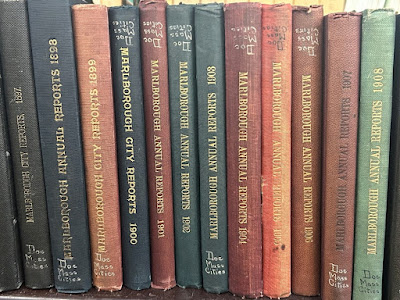For previous July celebrations, we’ve shared two other versions of the Declaration found in our collection. Both of these versions were printed less than two weeks after the Declaration was ratified by the Second Continental Congress in Philadelphia on July 4, 1776.
- A broadside version that was printed by Ezekiel Russell in Salem on July 17, 1776. Read more in our blog post.
- A newspaper version that was printed for The New-England Chronicle by Edward E. Powers and Nathaniel Willis on July 18, 1776. Read more in our blog post.
The version displayed this month was printed a few years later, in 1789 by Adams and Nourse, who were the official printers to the General Court. It is in a volume of the Perpetual Laws of the Commonwealth of Massachusetts, which, as stated on the title page, were published by the order of the General Court and cover the period from the commencement of the Constitution in October 1780, to the last Wednesday in May, 1789. Prefacing the laws are reprintings of a number of foundational documents. In addition to the displayed Declaration of Independence, there are also printings of the Articles of Confederation, the Constitution of the Commonwealth, the Treaty of Peace between Great Britain and America, and the Constitution of the United States.
Following the documents, the laws are organized into seven categories: Part 1: The Public and Private Rights of Persons; Part 2: Real and Personal Estate; Part 3: Courts and Forms of Process; Part 4: Criminal Matters; Part 5: Trade and Commerce; Part 6: Taxes, etc.; Part 7: Militia Regulations. It ends with a section of "miscellaneous." This is a comprehensive source representing the state of Massachusetts laws from 1780 through 1789, and if you want to peruse the full text, a digitized copy is available through the Internet Archive.
Visit us from July 1 through August 5 to see this version of the Declaration on display, and best wishes from the State Library for a festive and safe Independence Day!
Elizabeth Roscio
Preservation Librarian










